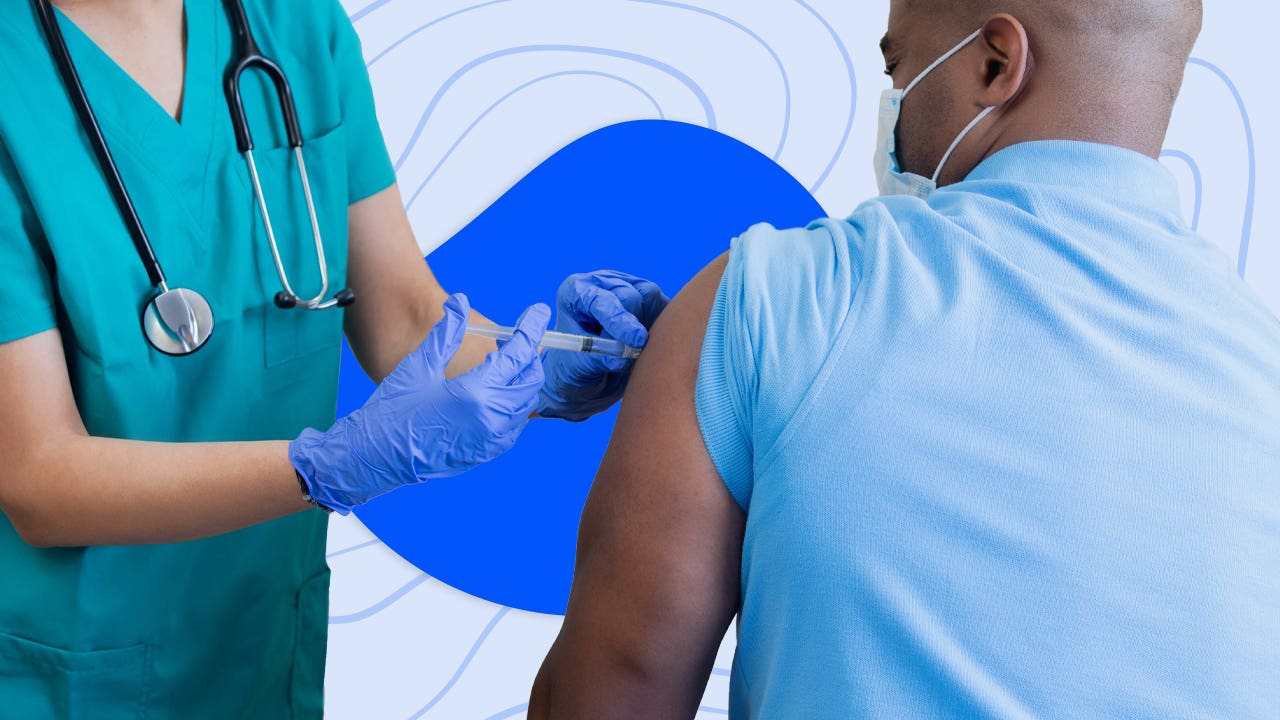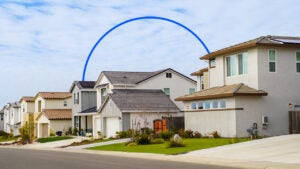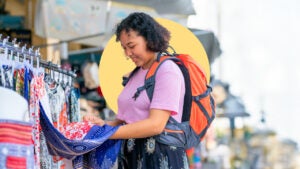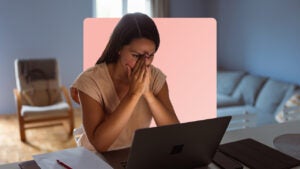Survey: 24% of adults not comfortable visiting businesses in person even after getting vaccine

Vaccines and declining case numbers may offer a glimmer of hope that the devastating coronavirus pandemic could soon come to an end, nearly a year after the outbreak infected millions worldwide and knocked the most workers out of a job since the Great Depression.
But Bankrate’s latest national survey provides a grave assessment of the post-pandemic economy: Nearly 24 percent of respondents indicate they won’t feel comfortable visiting a retailer, restaurant, grocery store or other business in person, even if they were to receive one of the available COVID-19 vaccines. An even larger share (30 percent) say they won’t take the shot at all.
That could potentially rob the reopening of the boom that many businesses and Americans are clamoring for. Also at issue is a persistent jobs shortage for what could be millions of service-sector workers, triggered by pandemic-induced changes to how many are choosing to spend their money.
“The path toward a stronger economy depends on full resumption of consumer spending associated with a successful vaccination effort,” says Mark Hamrick, Bankrate’s senior economic analyst. “The nation’s economy may face lingering challenges with some Americans reticent about getting COVID-19 vaccines or venturing back out in public.”
Key takeaways:
- Nearly 70 percent of adults say they will take the coronavirus vaccine once it’s available to them.
- More than 3 in 4 adults (76 percent) say they’d be very or somewhat comfortable visiting businesses in person after getting the vaccine, compared with 51 percent who would feel comfortable going out before receiving it.
- Nearly 24 percent of Americans say they won’t feel comfortable visiting firms in person, even after having received the vaccine.
- Almost 3 in 5 Americans (58 percent) see the vaccine as having a positive impact on the economy.
Nearly 70 percent of adults say they will take the coronavirus vaccine once it’s available to them
As new strains of the coronavirus spread and the U.S. death toll tops 500,000 people, close to 70 percent of adults say in Bankrate’s survey that they’ll take the vaccine once it’s available to them. That total includes 50 percent who said they’d be very likely to take the shot and another 20 percent who indicate that they’d be somewhat likely.
Public health officials are addressing supply bottlenecks and production delays by rolling out the vaccine in stages, with health care and frontline workers taking the top priority, followed by older Americans and individuals with pre-existing conditions. Top infectious disease expert Dr. Anthony Fauci predicts that every American who wants a vaccine will be able to get one by mid-to-late May or early June, after having originally estimated late March or early April.
In the eyes of economists, the rollout can’t come soon enough.
“The vaccine is, far and away, the most important thing for the economy right now,” says Jordan van Rijn, senior economist at the Credit Union National Association (CUNA). “We really need people to be feeling comfortable and safe to be able to go back and spend again for the economy to recover fully.”
Among the 30 percent of U.S. adults who indicated that they weren’t going to take the vaccine, 13 percent mentioned that they weren’t too likely to take it, while 17 percent said they were not at all likely.
The goal with vaccines is reaching the point where enough people in a community are protected from getting the disease through what’s called herd immunity. Estimates vary when it comes to determining what percentage of the population needs to be inoculated, with research from the Cleveland Clinic suggesting somewhere between 50 percent to 80 percent of people would need to get the vaccine.
The Centers for Disease Control is working on their own forecasts, while the Mayo Clinic points out that higher vaccination percentages are required the more contagious the virus. Scientists are already tracking two new COVID-19 variants that are already showing signs of being more contagious and virulent.
Unsurprisingly, vaccination willingness differed among demographics, household income, political ideologies, generations and regions, with those willing to take the shot residing in areas that were prone to deadlier outbreaks, and by some measures, deeper recessions. Those residing in the U.S. Northeast and West (74 percent and 77 percent) were most likely to indicate they’d take the vaccine, compared with 71 percent of respondents living in the Midwest and 63 percent of those living in the South.
Meanwhile, nearly 3 in 5 individuals in the South indicated that they wouldn’t take the vaccine if it were available to them.
The Silent Generation (those age 76 and older) came in as most willing to get the vaccine, with 86 percent stating they are either very or somewhat likely to take the shot, compared to 70 percent of baby boomers (57-75), 71 percent of millennials (25-40), 67 percent of Gen X (41-56) and 65 percent of Gen Z (18-24).
Respondents identifying as conservative were nearly four times more likely to say they’ll decline taking the vaccine compared with those who consider themselves to be liberal (47 percent compared to 12 percent).
Comparing comfort levels for going out in public
Economists noticed back in 2020 that lockdowns were only part of the devastating pandemic-induced recession’s story. Fears of catching the virus were what predominantly interrupted consumption, slamming the brakes on economic activity.
Illustrative of that trend, restaurant reservations dipped in early March before any formal lockdown began. States akin to Iowa, which never declared an official stay-at-home order, saw unemployment soar nearly as high as the national rate. Tourism-heavy Florida, meanwhile, has recovered slightly more than 58 percent of all pandemic-related job losses despite having pared back on restrictions earlier than most of the country.
“We’re just not going to be able to get that last group of people back to work — and it’s a big group of people — until we get the pandemic behind us,” said Federal Reserve Chair Jerome Powell at a January post-policy meeting news conference.
Americans are putting policymakers’ concerns into practice. Respondents in Bankrate’s survey were nearly evenly split on how comfortable they feel going out without having taken the vaccine, with 51 percent indicating they’d feel comfortable visiting businesses such as retailers, restaurants, grocery stores and malls before receiving the COVID-19 vaccine and 49 percent saying they wouldn’t feel comfortable.
Nearly a quarter (23 percent) indicated they’d feel very comfortable venturing out even without taking the vaccine, while 28 percent said they’d feel somewhat comfortable. Another 27 percent say they’d feel somewhat uncomfortable, while 22 percent said they’d feel very uncomfortable.
Unsurprisingly, those tending to feel more comfortable about going without having received the vaccine tended to be those who first indicated they weren’t interested in taking the shot once it’s available to them. About 72 percent of those respondents said they’d either feel very or somewhat comfortable visiting retailers or restaurants in person. In contrast, just 42 percent of those who said they plan to take the vaccine indicated that they would feel comfortable leaving their homes before taking it.
Americans’ comfort levels for venturing out of their homes also substantially increase once they’ve imagined that they’ve taken the shot, Bankrate’s survey found.
Where just 51 percent felt comfortable leaving their homes before the vaccine, 76 percent indicated that they’d feel comfortable venturing out of their homes after having taken it. That total incorporates a 26 percent share who say they’d feel very comfortable and another 50 percent who say they’d feel somewhat comfortable.
Nearly a quarter of Americans still won’t feel comfortable visiting firms in person after taking the vaccine
Still, a substantial share of Americans (nearly 1 in 4, or 24 percent) say they won’t feel comfortable going out even after taking the vaccine. That total includes 16 percent who say they’d feel somewhat uncomfortable and 8 percent who would feel very uncomfortable.
Those who felt more uncomfortable going out in public even after their vaccinations include lower earners (31 percent of households earning under $30,000 versus just 17 percent of those making $80,000 and above) and individuals with less education.
Black and Hispanic respondents (34 percent and 28 percent, respectively) are more likely to be uncomfortable after having received their vaccinations, compared with 21 percent of whites.
Many economists are banking on a post-vaccine boom once concerts, sporting events, indoor dining and vacations are no longer considered off limits. Yet, Bankrate’s survey is highlighting that a substantial consumer base may still remain on the sidelines even after herd immunity is reached, undercutting the recovery and reducing the likelihood that employers recover all pandemic-related job losses.
Apprehension over activities that require being in close contact with other people has resulted in seismic shifts to the way consumers spend their time and money. With the pandemic leading to seemingly permanent shifts in behavior, firms might be forced to adapt to survive.
“A lot of these standard, in-person jobs might end up going away and could potentially never come back, at least to the same level that they were before,” van Rijn says.
That might mean reducing employment in the frontline positions like waitressing, hosting and bartending, a February report from the Bureau of Labor Statistics found. Authors Lindsey Ice, Michael Rieley and Samuel Rinde are forecasting that the industries already struggling with pandemic-related job losses are the ones most likely to see the biggest declines by 2029.
The food service industry is a prime example, the report found, with restaurants expected to keep finding new ways to reduce contact between employees and customers, so patrons feel comfortable while dining out. That might include more contactless, mobile or online ordering, while ramping up pick up, delivery, takeout and curbside-pickup services.
That’s not to say employment won’t eventually bounce back, but rather that the jobs won’t exactly return to the places where they first disappeared. One such example: Home-confined consumers are spending more money on e-commerce and durable goods. As a result, Amazon, Home Depot and the like are flourishing.
General merchandise stores including warehouses and supercenters, along with stores that sell food and beverage products, are benefiting from more consumers deciding to cook and drink at home. As such, employment at those establishments, along with couriers and messengers and warehousing and storage, have risen beyond pre-pandemic levels.
The hope is that workers can ride those booms and find new opportunities in industries where they previously never worked. But many might not have the wherewithal to afford new job training or a career switch, given that job losses fell among the most vulnerable.
“It’s really nice to say, ‘Let’s retrain people,’ but in practice, it can be a lot more difficult,” van Rijn says. “That can be challenging for older workers and people who have been out of the labor market for a while. You see much lower labor force participation.”
Nearly 58 percent associate the vaccine as having a major positive impact on the economy
Even as some Americans remain skeptical about the vaccine, a solid majority (58 percent) attribute the treatment method as having a positive impact on the economy by the end of the year, with 35 percent saying that will be major and 23 percent expecting that positive impact to be minor.
Roughly 14 percent expect the vaccine will have a negative impact, with a modest 6 percent and 9 percent predicting that negative impact to be minor and major, respectively. A separate 15 percent said they didn’t know, while another 14 percent say they expect no major or minor influence.
What this means for you
One symptom of the pandemic-induced recession, the U.S. personal savings rate is at its highest ever, according to the Department of Commerce. Households do tend to stash away more cash in times of economic distress, though stimulus checks, ramped up unemployment benefits and a hunkered down consumer are what’s driving the rate up to records.
The hope, however, is that some of those consumers might start to use that cash once the reopening kicks off.
“We do expect a relatively strong recovery because of that high savings rate,” van Rijn says. “When the vaccinations start rolling out much later in the year, maybe by the summer or third quarter when we get closer to herd immunity, people are going to want to be spending that money.”
But the biggest challenge might be keeping your spending in check, particularly at a time when the rebound may feel unequal. With home and stock prices soaring, those well-to-do enough to own assets have prospered during the current recession. Those with jobs at the bottom of the wage distribution have a different recession story to tell, encountering unemployment and risking illness because their occupation brings them in close contact with other people.
Fewer than 4 in 10 Americans say they could pay a surprise $1,000 bill from savings, a separate January Bankrate survey found. The coronavirus pandemic has illustrated just how important it is to have an emergency fund. Think twice before going overboard on your spending if it means tapping into that cash cushion or taking away from the money that would’ve otherwise been allocated toward strengthening your savings.
“For the vast majority of Americans eager for activities once taken for granted before the pandemic such as shopping, dining out or going on vacation, it will be key to avoid overspending while mindful of short and long-term financial goals,” Hamrick says. “It is just a question of having a budget and balancing these activities to protect the health of personal finances.”
Methodology
Bankrate.com commissioned YouGov Plc to conduct the survey. All figures, unless otherwise stated, are from YouGov Plc. Total sample size was 2,305 adults. Fieldwork was undertaken Feb. 4-5, 2021. The survey was carried out online and meets rigorous quality standards. It employed a non-probability-based sample using both quotas upfront during collection and then a weighting scheme on the back end designed and proven to provide nationally representative results.
Why we ask for feedback Your feedback helps us improve our content and services. It takes less than a minute to complete.
Your responses are anonymous and will only be used for improving our website.






